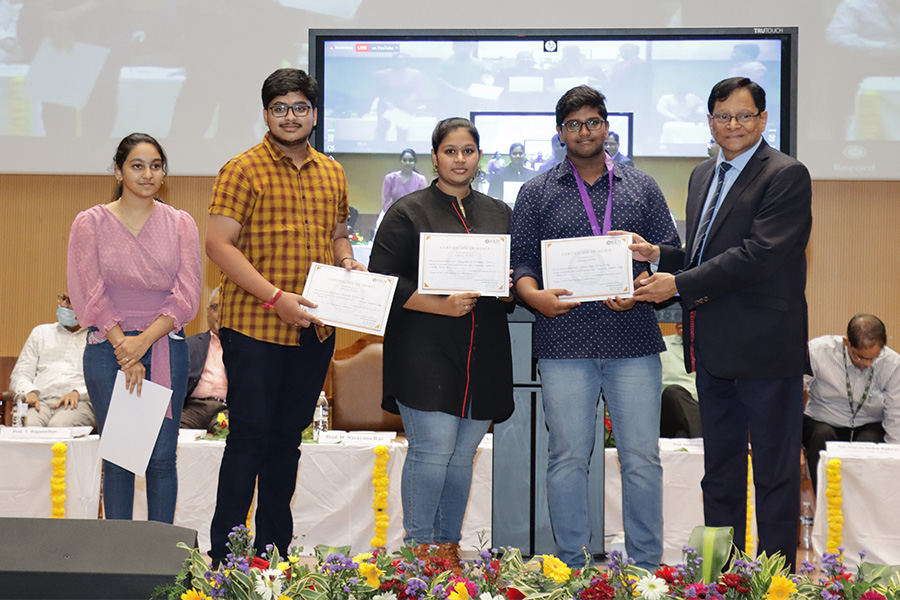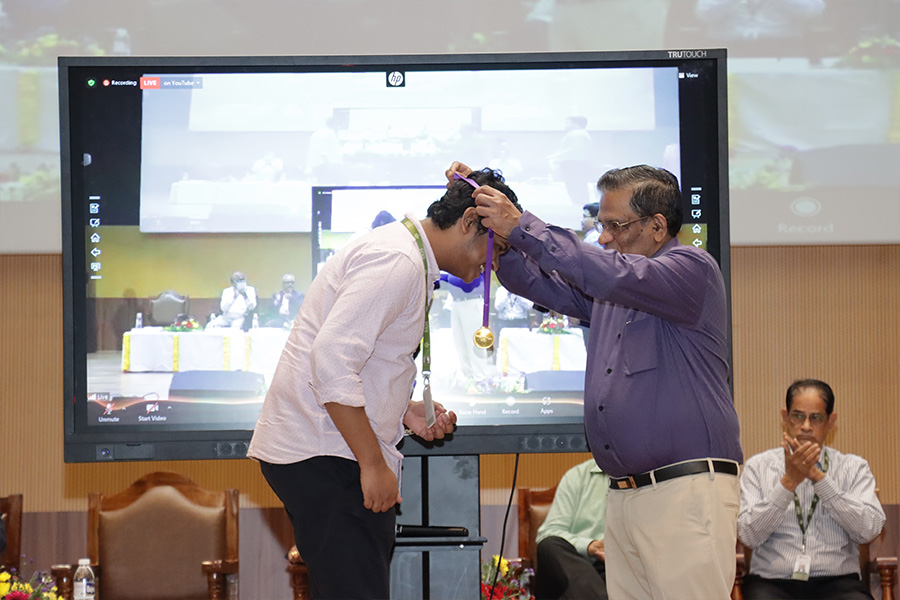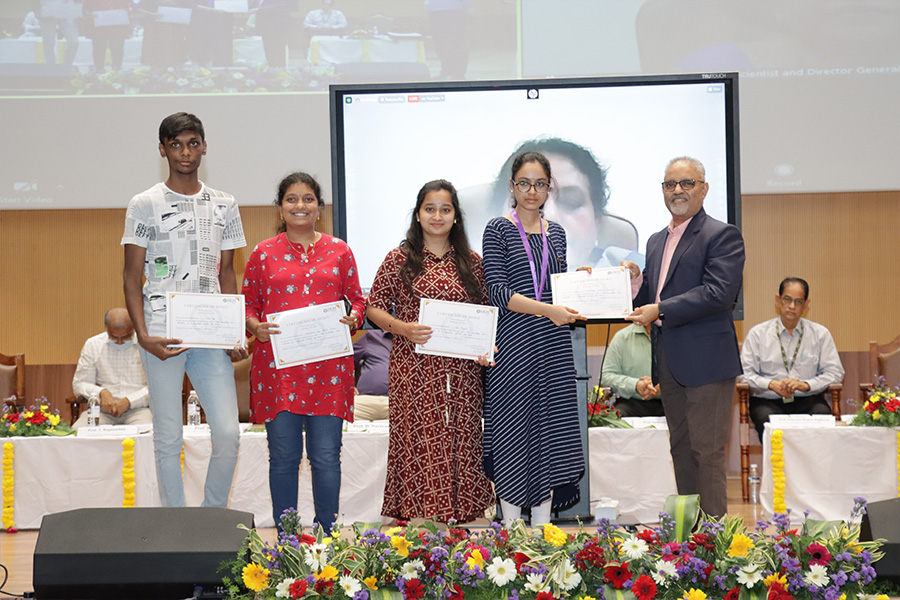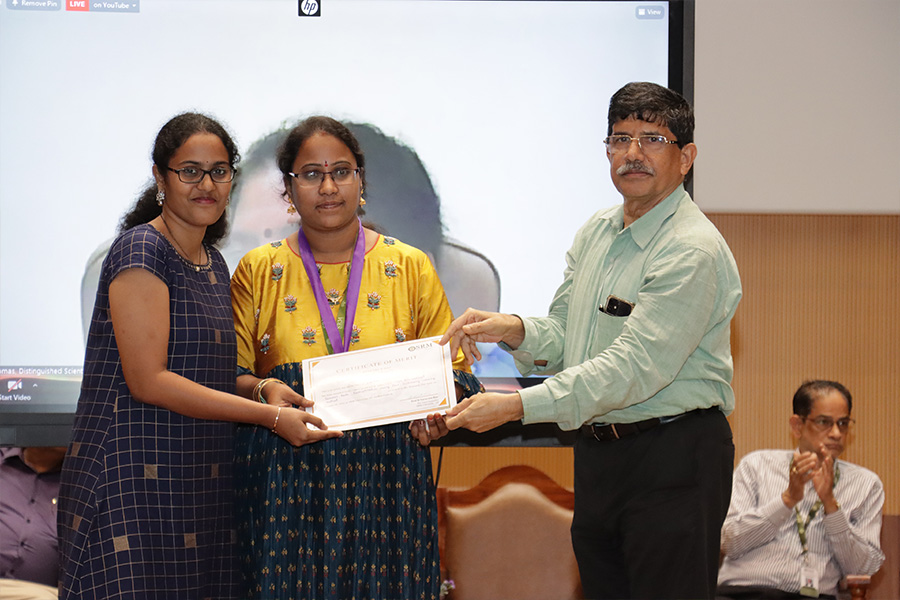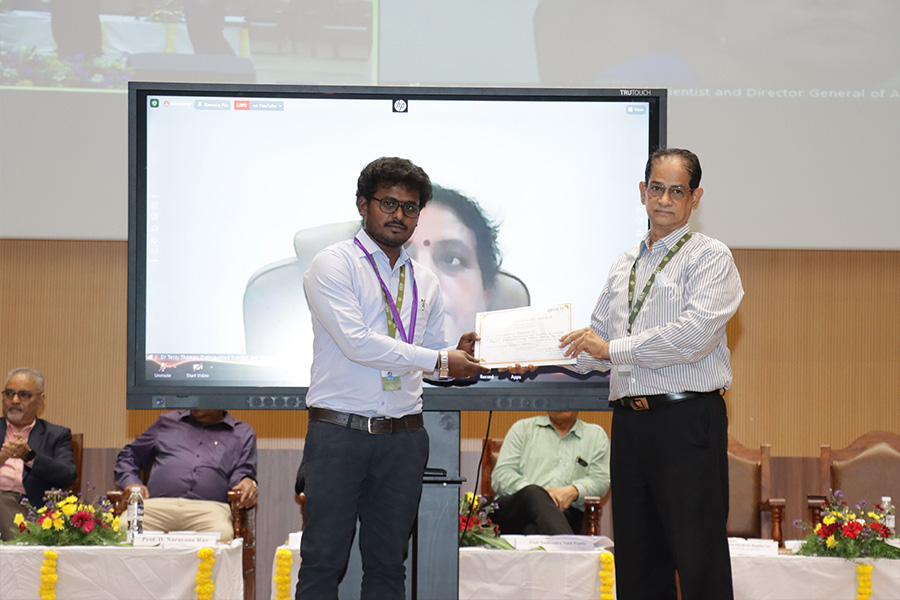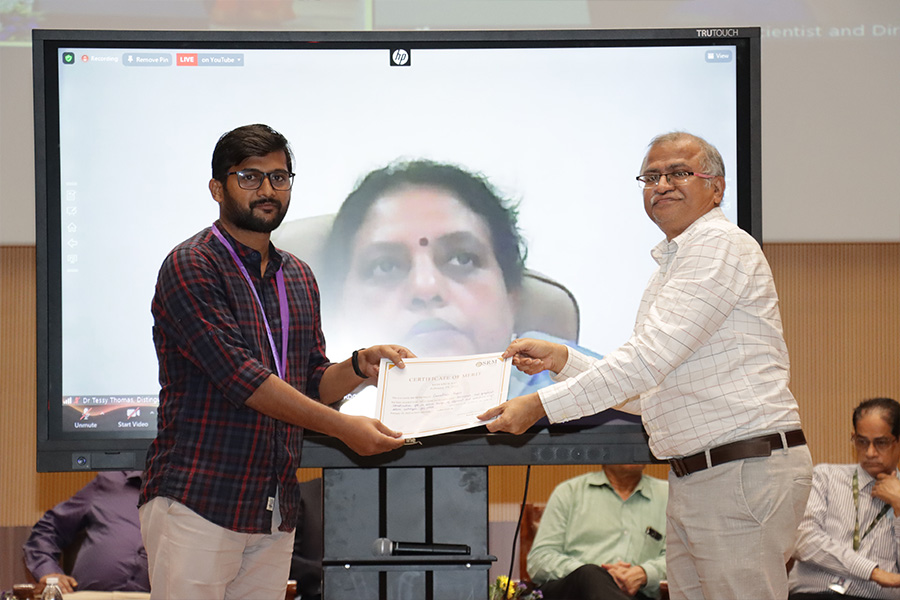Molybdenum as the next-generation catalyst
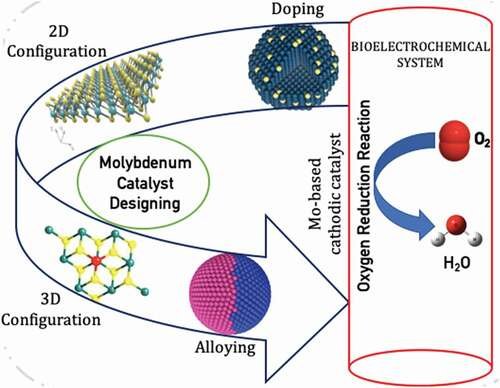 The Department of Environmental Science is proud to announce that Dr Lakhveer Singh has published his paper titled, “Progressions in cathodic catalysts for oxygen reduction and hydrogen evolution in bioelectrochemical systems: Molybdenum as the next-generation catalyst” in a prestigious journal Catalysis Review with a high Impact Factor of 20.21.
The Department of Environmental Science is proud to announce that Dr Lakhveer Singh has published his paper titled, “Progressions in cathodic catalysts for oxygen reduction and hydrogen evolution in bioelectrochemical systems: Molybdenum as the next-generation catalyst” in a prestigious journal Catalysis Review with a high Impact Factor of 20.21.
The article is published in collaboration with NCL Pune, Hong Kong Baptist University, and VITO-Flemish Institute for Technological Research, Belgium.
Abstract of the Research
Oxygen reduction reactions (ORR) are unanimously a key factor of system performances in bioelectrochemical systems (BESs), low-temperature fuel cells, and generally in several electro-chemical platforms. Platinum (Pt)-based catalyst is the finest electrocatalyst for ORR in BESs; however, it is constrained by its low abundance, high price, and poor catalytic durability in an electrochemical setup for cathodic reaction kinetics. Molybdenum (Mo) with its multi-dimensional form as 2D and 3D layers and synergistic combination with other non-metals offers prospects of extraordinary performance as a low-cost metal-based ORR catalyst over the Pt in delivering enhanced ORR potential.
About the Research
This article throws light on the current requirements of sturdier catalyst material and thus provides a comprehensive review of the continuing efforts in exploring the possibility of Mo as a low-cost metal-based ORR catalyst for sustainable energy production.
Mo-based catalysts have been now widely used for their applications in environmental and energy-based catalysis due to the low cost of Mo, high stability, and excellent activity.
In the future, Dr Lakhveer Singh and his collaborators are working on overcoming limitations to fabricate durable, stable, and catalytically active micro/nanoscale two-dimensional MoS2-based cathodes at an industrial scale, commercial bioelectrochemical devices can be obtainable in future.
- Published in Departmental News, ENVS News, News, Research News
Agni Putri Dr Tessy Thomas addressed SRM University-AP on Research day
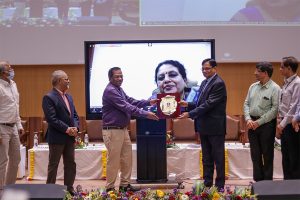 The fourth edition of Research Day at SRM University-AP was held on Saturday, February 19, 2022. The missile woman of India, Dr Tessy Thomas appreciated the efforts of SRM AP in entering into new areas of research and encouraged the scholars to contribute to the country’s growth by developing indigenous technologies. The Research day is conducted as a breakthrough opportunity for the faculty members, research scholars and students of SRM University-AP to exchange and exhibit their ideas on research.
The fourth edition of Research Day at SRM University-AP was held on Saturday, February 19, 2022. The missile woman of India, Dr Tessy Thomas appreciated the efforts of SRM AP in entering into new areas of research and encouraged the scholars to contribute to the country’s growth by developing indigenous technologies. The Research day is conducted as a breakthrough opportunity for the faculty members, research scholars and students of SRM University-AP to exchange and exhibit their ideas on research.
In her keynote address, Dr Thomas explicated that the DRDO’s efforts positioned the nation among the top few countries in the world with multilevel strategic capability. These include the Agni series, anti-ballistic missile programmes, underwater weapon systems, main battle tanks, multi-range radar systems, electronic warfare, fighter aircraft, Light Combat Aircraft and its variants, and airborne early warning and control systems.
Delivering the welcome address, Prof D Narayana Rao, Pro-Vice-Chancellor, SRM University – AP highlighted that India needs to gradually move from a net consumer of knowledge to a net producer of knowledge as India emerges as one of the world’s largest economies.“Therefore, SRM University-AP provides faculty members and research scholars the required support to carry out research in new domains of knowledge” he added. He further talked about the 25 years vision of SRM University-AP in research and development starting from 2022 to 2047. During the next 25 years, the faculty members and research scholars of SRM AP will pursue significant and outstanding research in the areas of water resources and management, blue economy, self-diagnostic medical devices, new-age medicine, hydrogen as a potential replacement of fossil fuels and many more novel branches of scientific knowledge.
University Vice-Chancellor Prof V S Rao recollected the interaction he had with Dr Tessy Thomas in BITS Pilani Hyderabad campus and invited Dr Thomas to visit the SRM University-AP campus physically to converse with the students. During interaction with students and faculty members, Dr Tessy Thomas elaborated how industrial and academic collaborations facilitate the development of indigenous technologies.
Among 285 submissions from students and from the faculty community of SRM AP on various thematic areas, selected papers were awarded gold and silver medals. Prof V S Rao, Vice-Chancellor; Prof D Narayana Rao, Pro-Vice-Chancellor; Prof Sudhindra Nath Panda, Dean – Faculty & Academic Affairs; Prof B V Babu, Dean-School of Engineering and Sciences; Prof R S Desikan, Associate Dean-in-charge, School of Liberal Arts and Social Sciences (SLASS) & School of Entrepreneurship and Management Studies (SEAMS); Prof T Ragunathan, Associate Dean-in-Charge (Engineering)-School of Engineering and Sciences gave away the medals and certificates. Further, a special issue of abstracts that comprises all the submitted abstracts was unveiled on behalf of Dr Tessy Thomas for public readership.
Dr Murali Krishna Enduri, Assistant Professor, Department of Computer Science Engineering was the convener and Dr Anandarao Suvvari, Assistant Professor, Department of Economics; Dr Sabyasachi Chakrabortty, Assistant Professor, Department of Chemistry; and Dr Lakshmi Sirisha Maganti, Assistant Professor, Department of Mechanical Engineering were the co-conveners of the Research Day-2022.
- Published in News
Juxtaposing Cross-Cultural Notions of Beauty
 The School of Liberal Arts and Social Sciences is glad to announce that Dr Saurabh Todariya has published his paper titled “Aesthetic Delight and Beauty: A Comparison of Kant’s Aesthetics and Abhinavagupta’s Theory of Rasa” in the Journal of Dharma Studies published by Springer Nature. It is published in collaboration with Consciousness Studies Program, National Institute of Advanced Studies (IISc Campus), Bangalore.
The School of Liberal Arts and Social Sciences is glad to announce that Dr Saurabh Todariya has published his paper titled “Aesthetic Delight and Beauty: A Comparison of Kant’s Aesthetics and Abhinavagupta’s Theory of Rasa” in the Journal of Dharma Studies published by Springer Nature. It is published in collaboration with Consciousness Studies Program, National Institute of Advanced Studies (IISc Campus), Bangalore.
Anything that is pleasurable to perceive is defined as beautiful. However, the notion of beauty takes different interpretations with respect to the lens it is viewed through. It is either rooted in one’s personal feelings or by virtue of something universal residing in the object. Through his paper, Dr Todariya seeks to explore this question by comparing the Philosophy of German Philosopher, Kant and the great Indian Philosopher of the 9th Century, Abhinavagupta. He proposes that appreciation of beauty is only possible when the personal and egoistic involvement is suspended with respect to the beautiful object.
The research is significant in the domain of cross-cultural philosophy and looks into aesthetics from a philosophical point of view, relatively an underexplored area in Indian Academia. Dr Todariya also aims to work on comparative aesthetics, especially on the notion of Hermeneutics and Art in Indian and Western Aesthetics in the future.
Abstract of the Research
The study aims to address the existing research gap through a thematic comparison between the aesthetics of Kant and Abhinavagupta. This paper explores Kant’s notion of aesthetic judgment based on disinterestedness with Abhinavagupta’s analysis of sādhāraṇīkaraṇa. We argue that the notions of “disinterested judgment” in Kant and sādhāraṇīkaraṇa in Abhinavagupta point towards the impersonal nature of aesthetic delight which makes the universality of aesthetic experience possible. Hence, aesthetics in both Kant and Abhinavagupta are not the personal and subjective experience, but a kind of universality based on the ability to experience impersonal joy. However, the notion of aesthetic delight in Kant is confined to the agreeable mental states only, while in Abhinavgupta the notion of rasa includes both positive as well as the negative mental states like fear, disgust, etc. In this regard, the paper will also analyse the affinity between the notion of sensus communius in Kant and sahṛdaya in Abhinavagupta which highlights the importance of aesthetic community and the impersonal nature of aesthetic delight.
- Published in News
SRMAP receives SWAYAM-NPTEL ‘A’ rating
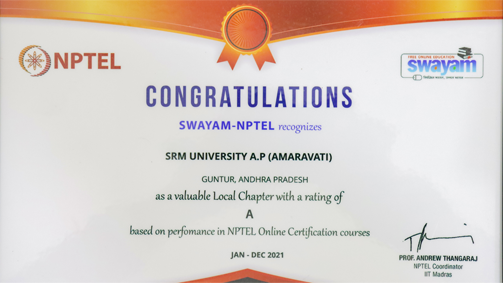 SRM University-AP is happy to announce that it was recognised by NPTEL SWAYAM as a valuable local chapter with an ‘A’ rating for the year Jan-Dec 2021. The rating is based on the performance of students who took the examinations for various SWAYAM courses.
SRM University-AP is happy to announce that it was recognised by NPTEL SWAYAM as a valuable local chapter with an ‘A’ rating for the year Jan-Dec 2021. The rating is based on the performance of students who took the examinations for various SWAYAM courses.
SWAYAM has awarded a plaque to SRM University-AP and a certificate of appreciation to Dr Satya Pramod Jammy for his role as the university local Coordinator. It is a great achievement for the young university.
The philosophy behind this mode of education is to facilitate the curiosity of students who have an interest in the courses that transcend the conventional curriculum and give them a unique edge over their peers. SRM University-AP encourages students to study these from SWAYAM and other MOOCs available. Their performance in the examinations conducted by SWAYAM will earn them grades and credits. This was made available to the students for the first time in January 2021 which opened a plethora of opportunities to the students, and they have enjoyed this new learning possibility.
In the year 2021, a total of 470 students registered for various courses. The pass percentage is a whopping 90%, there are 17 students in the top 5%, 4 students in the top 2% and one student in the top 1% of their respective courses. 69 % (321) of the students are in Elite and higher categories. 5% students received Elite+gold award, 30% receiving Elite+silver and 35% receiving Elite certificates.
Dr Satya Pramod Jammy is pleased with all the students for their active participation and their brilliant performance. Obtaining an ‘A’ grade in the first year of implementation stands as a testament to the academic excellence of SRM University-AP. Dr Jammy is also thankful to all the department level coordinators, Dr Tapas, Dr Sreenivasulu, Dr Rajiv, Prof. Jayaseelan, Dr Malavika, Dr Ramanjaneya Reddy, and Dr Mong for encouraging the students and actively participating in the discussions. Mr V. Srinivasarao (Asst. Librarian) was instrumental in setting up SWAYAM in a short period.
Dr Jammy expressed his gratefulness to the Vice-Chancellor, Prof V. S. Rao, Deputy Dean Academic affairs Dr B. Siva Kumar and the entire University management for their support in making this a possible endeavour and its glorifying success.
- Published in News


